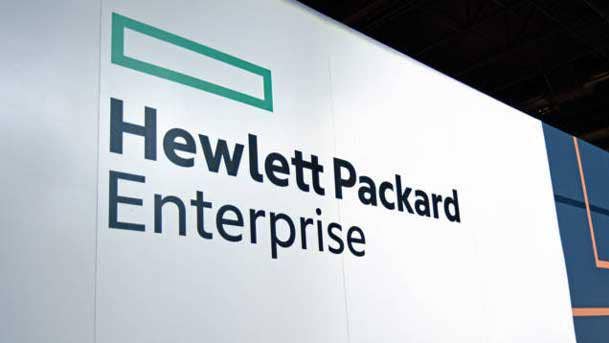5 Things To Know About The Latest Citrix-Microsoft Pact
‘As organizations everywhere adapt to new ways of work, they will need to reimagine how and where work gets done,’ says Microsoft CEO Satya Nadella of the pact.

Citrix And Microsoft Renew Vows Amid Pandemic
The coronavirus crisis has thrust Citrix Systems, a company that has long enabled remote work and flexible access to business systems, into a more critical role for many enterprises.
With global quarantines, abandoned offices and work-from-home mandates, demand for Citrix products has soared—total revenue in Q1 2020 was up 20 percent to $861 million, with subscription revenue climbing by 89 percent, largely driven by business continuity use cases.
The crisis has spurred the virtualization vendor to expand its most important technical relationship to better help joint customers deal with a business operations environment that has been turned on its head, Liz Fuller, senior director of alliance marketing at Citrix, told CRN.
Citrix and Microsoft this week renewed an agreement that positions them closer to each other, and pledges more joint development to help customers get through the current crisis, and beyond.
“The hope behind the agreement is so much more than the agreement itself,” Fuller told CRN.
As part of that collaboration, the companies are also creating new tools and services designed to eliminate friction partners see in the field, enabling their channels to “position products in a more compatible and symbiotic kind of way,” Fuller said.

Covid Collaboration
The coronavirus crisis, with its on-again, off-again work-from-home mandates, encouraged Citrix and Microsoft to expand their long-standing alliance.
“We have been partners for a very long time,” Fuller said. “We’re just moving things along, as [Covid-19] clearly accelerates how we are going to be driving our customers to the cloud.”
The global outbreak has heightened enterprise demand for flexible infrastructure that can be accessed from anywhere and scaled at a moment’s notice. That demand won’t diminish after the pandemic ends.
“There is a new normal, and we’re trying to figure out our role in it,” Fuller said.
Under the latest multi-year agreement governing the relationship, the two companies committed even further to collaborating on product development and helping position joint customers on Citrix products hosted on Microsoft’s cloud.
“We’re trying to get our customers ready,” Fuller told CRN. “A lot of conversations we’ve been having around getting to cloud in a hybrid fashion have been validated by what we’re seeing with the Covid pandemic.”
“As organizations everywhere adapt to new ways of work, they will need to reimagine how and where work gets done,” Microsoft CEO Satya Nadella said of the partnership.
“Together with Citrix, we will apply the power of Azure to this challenge, helping our customers seamlessly and securely connect their employees to their applications, so they can be more agile and productive wherever they are,” Nadella said.

Reinforcing Preferred Relationship
A few years ago, Citrix designated Microsoft Azure as its strategically preferred public cloud for hosting Citrix Workspace—a portal for ingesting all Citrix back-end services, as well as dozens of apps from popular Software-as-a-Service vendors.
With their latest agreement, Citrix has “reinforced” that status, Fuller said, making clear the virtualization vendor first recommends Azure to its on-premises customers looking to adopt a public cloud platform to make it easier to work from anywhere, on any device.
Microsoft reciprocated by designating Citrix Workspace, for the first time, as its “preferred digital workspace solution” to run on Azure.
“Our customers want the technology to work together, and we’re making sure we work together in the field and are having the conversations our customers want to hear,” Fuller said.
The special relationship doesn’t mean exclusivity, she noted. Both Citrix and Microsoft will always support customers using the public clouds or virtual desktop and application platforms of their choice.

Enabling Partners To Deliver Joint Solutions
As part of the renewed partnership agreement between Citrix and Microsoft, the two tech stalwarts will develop and provide to their channels new tools and services that make it easier to shift Citrix customers from on-premises desktop and application virtualization platforms to Azure.
Those will include migration guides, migration automation tools, and the ability to support both on-premises and cloud environments with the same architecture to ease the transition.
“We’re building tools allowing sellers, and channels, to get customers to shift their workloads out to Azure,” Fuller said.
The agreement should reduce “friction areas” around the joint offerings, and eliminate some of the FUD—Fear, Uncertainty and Doubt—in the market and in the channel around the Citrix-Microsoft relationship, she said.
“The way we partner with Microsoft, we understand there are customers with a variety of needs, and our job is to help those customers and our partners meet those the way they want to,” Fuller told CRN.

Roadmap For Joint Development
Citrix and Microsoft will devise a joint product roadmap around Citrix Workspace, Citrix SD-WAN, Azure and Microsoft 365—products that will be sold through their direct sales forces via the Azure Marketplace, and through the channel.
As part of that effort, Citrix will invest in building a Microsoft-centric Citrix Workspace, providing deep integrations to optimize performance, functionality, and micro-apps for Windows Virtual Desktop and Microsoft 365, including Microsoft Teams. Internally, Citrix will use Azure and Microsoft 365 across its operations to accelerate that innovation and enhance productivity.
The agreement will spur more products, innovations and integrations in the years to come as more organizations look to implement remote work as a permanent feature of their cost and workforce management strategies.
But the companies are keeping their cards close to the vest.
“We are working on additional products and innovations, and how to bring our products closer together,” Fuller said. “But we’re not fully revealing that roadmap.”

Citrix-HPE Coronavirus Collaboration
Citrix’ extension of its Microsoft alliance comes on the heels of collaboration with Hewlett Packard Enterprise that aims to help organizations better manage workforce disruptions caused by the Covid-19 crisis.
HPE and Citrix had already been offering integrated technology to help enterprises quickly adopt virtual desktop infrastructure that enables employees to work from home amid the pandemic.
In June, HPE committed to using new microapp capabilities from Citrix to deliver workflows within its Intelligent Workspace platform that will help many of those customers safely return employees to physical offices.
Those solutions will help companies monitor employee symptoms, implement health agreements, assist social distancing, ensure shared spaces are frequently and properly cleaned, and locate personal protective equipment.
HPE, using Citrix technology, will also deliver custom solutions that use IoT building systems like touchless visitor signups and building entries to improve safety in their facilities.